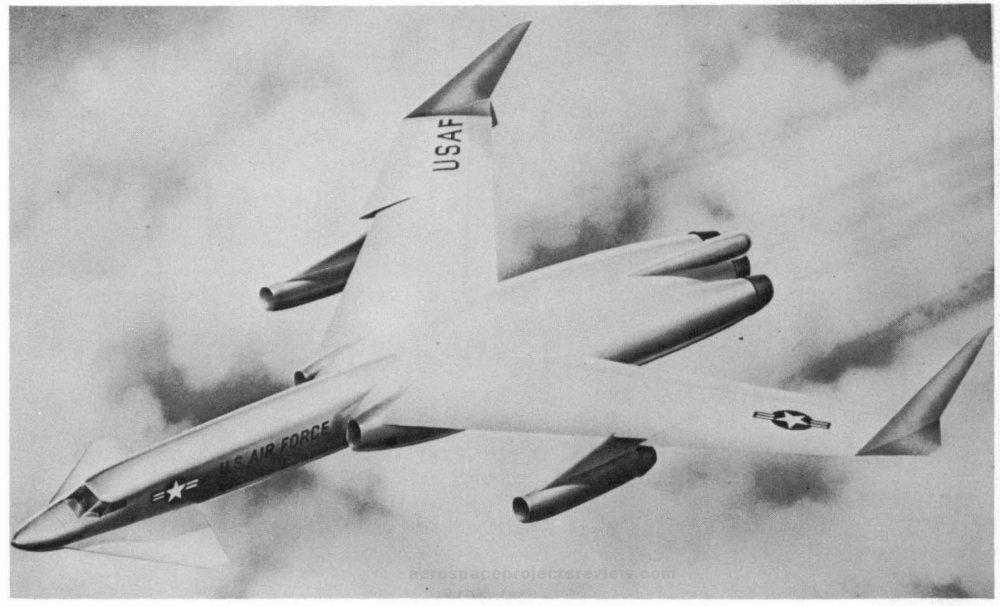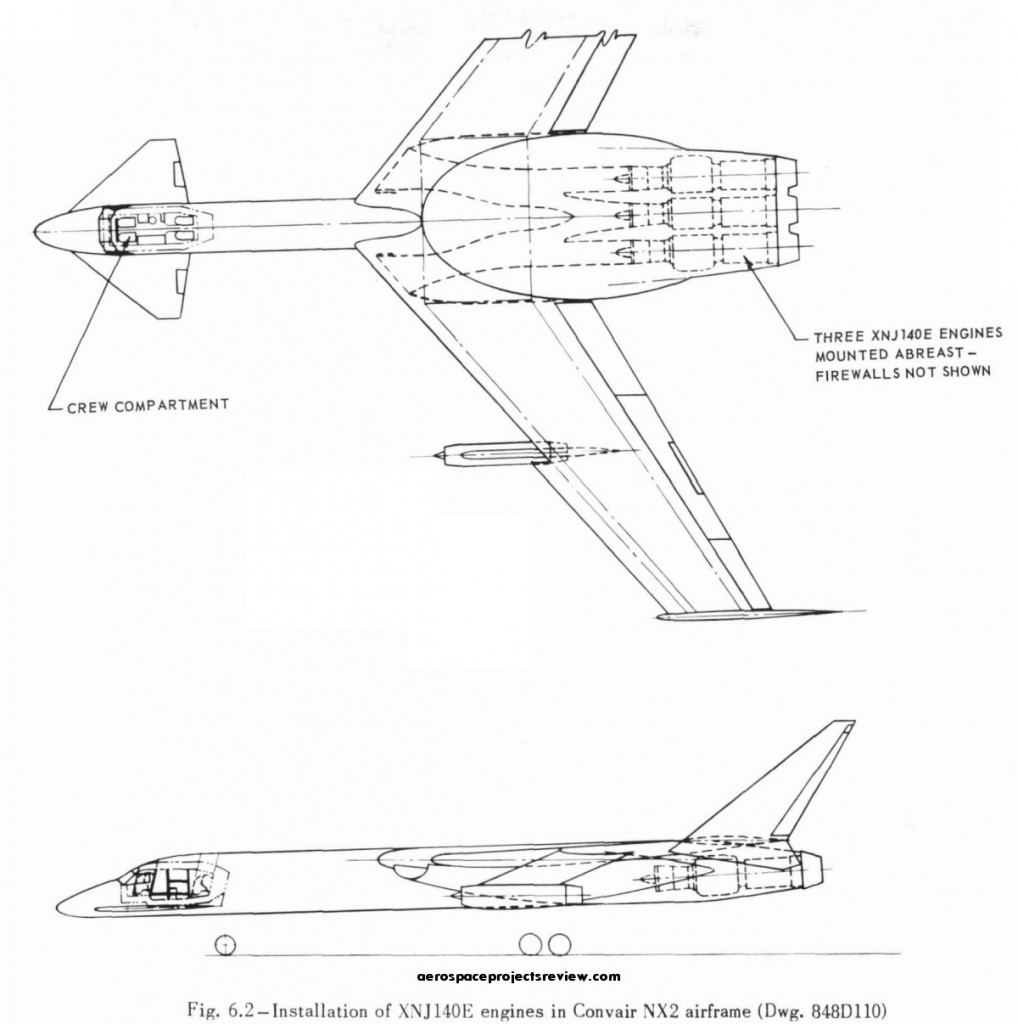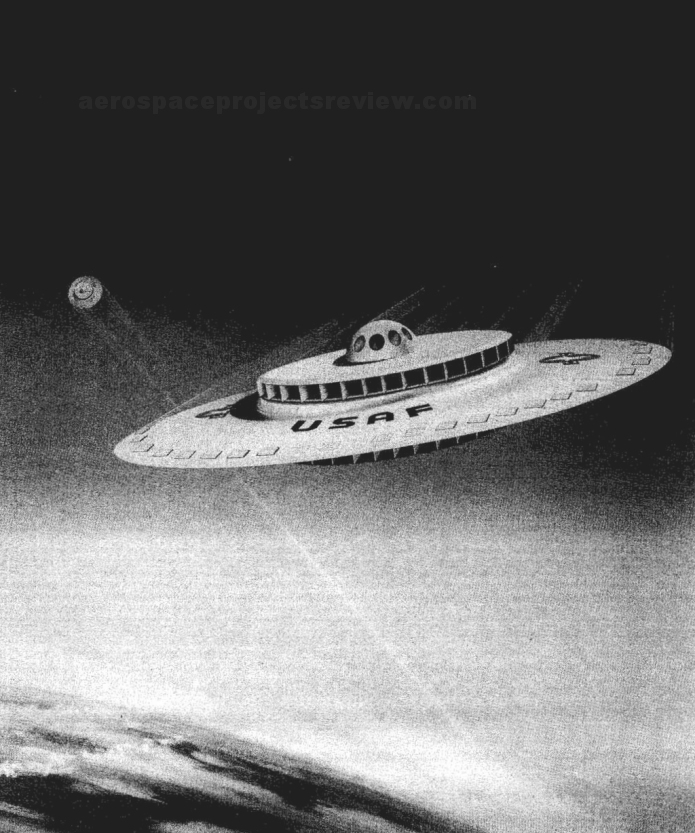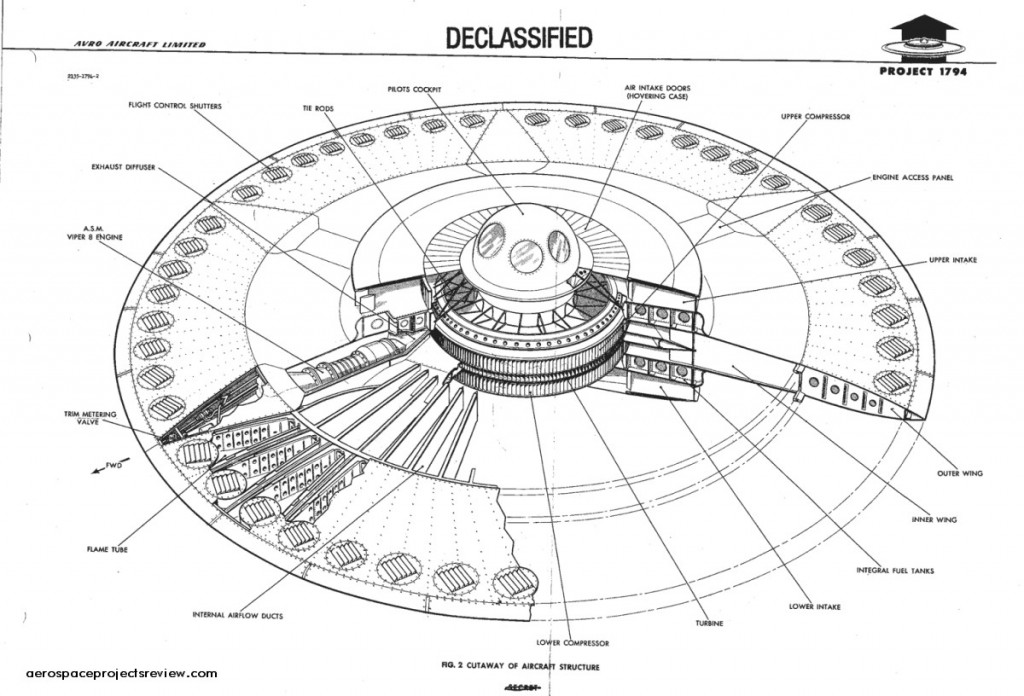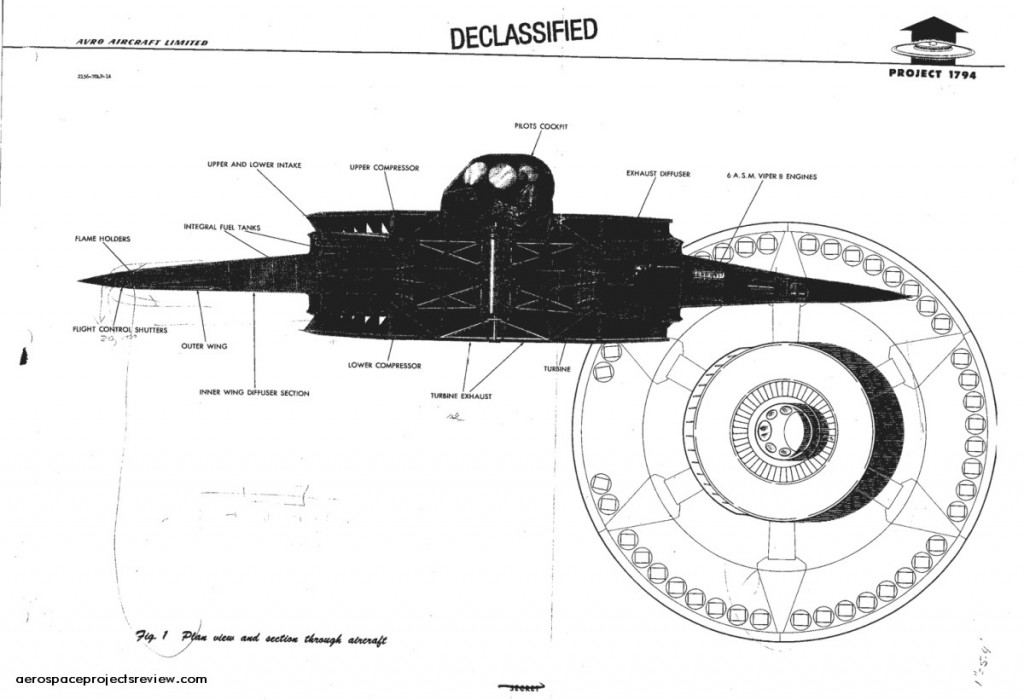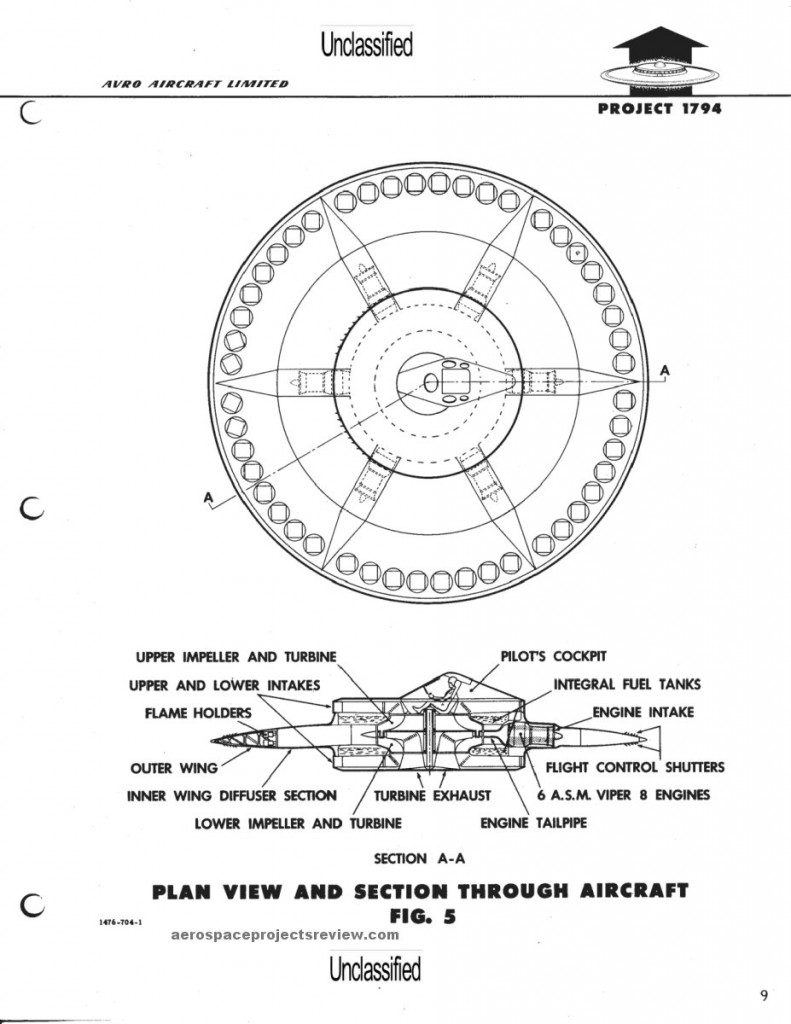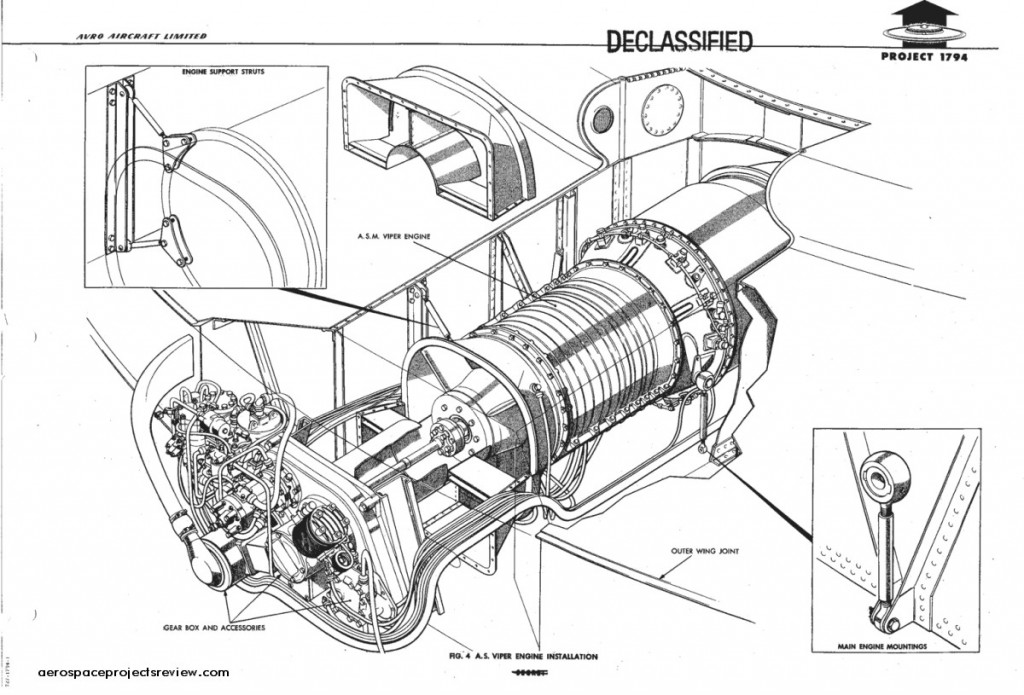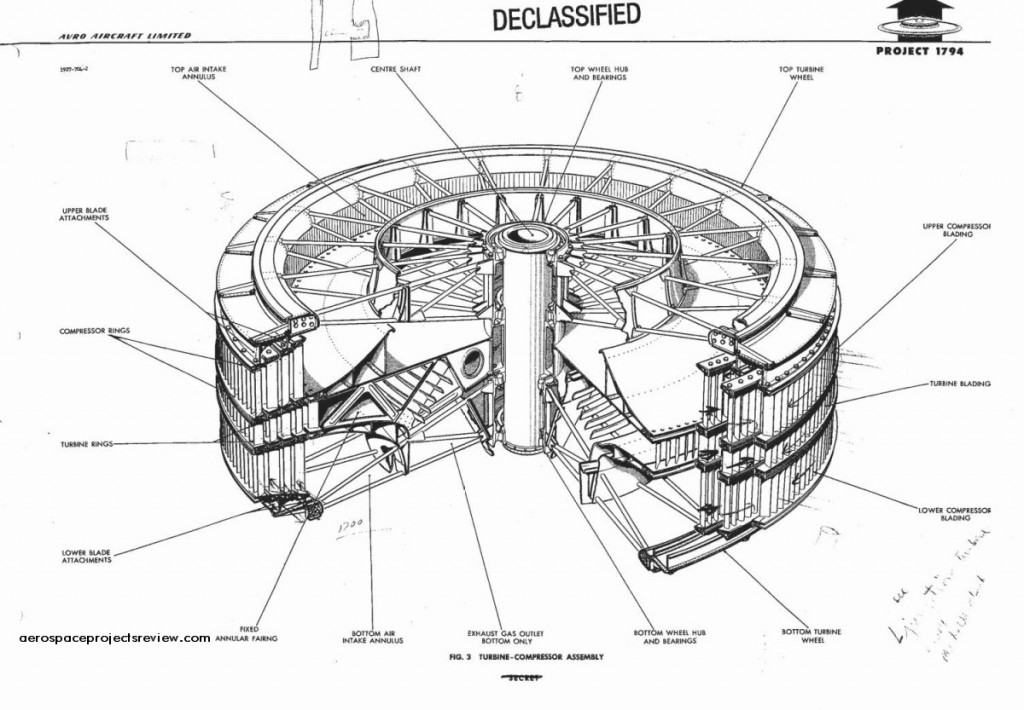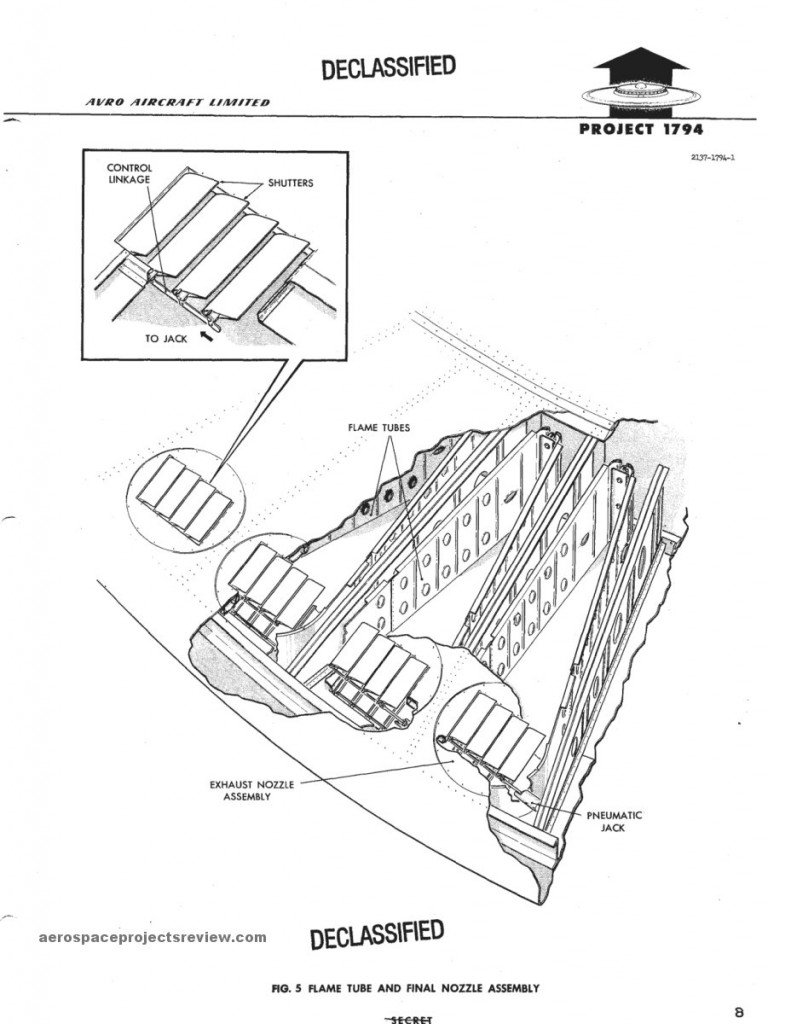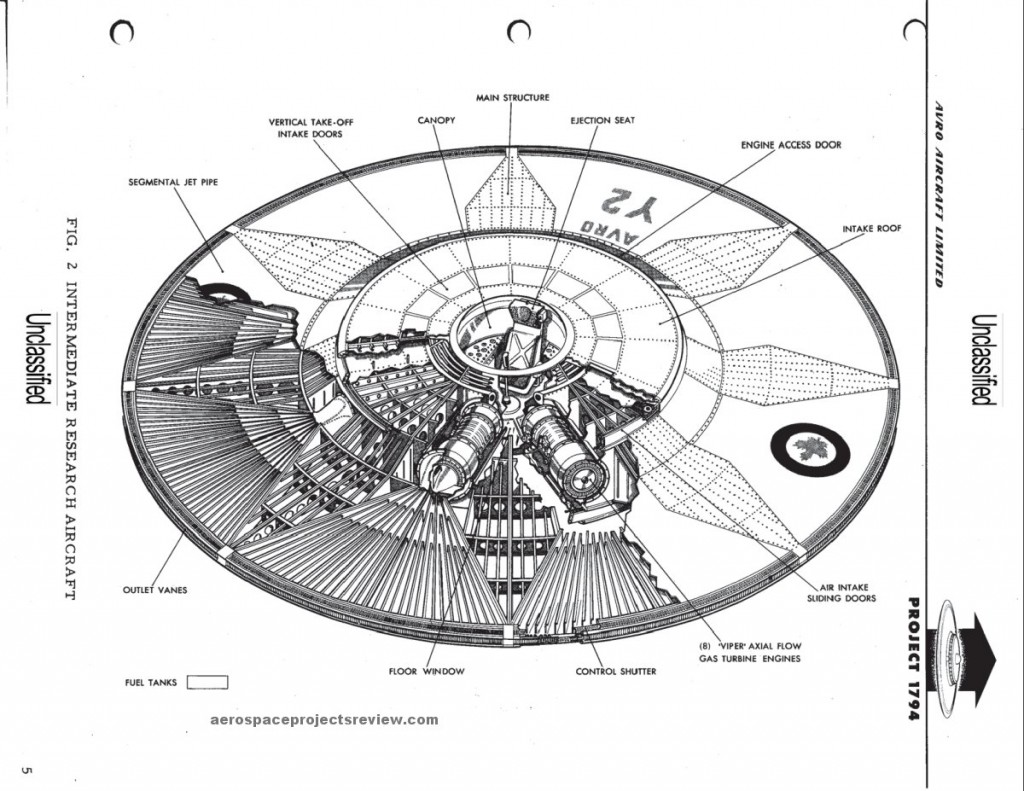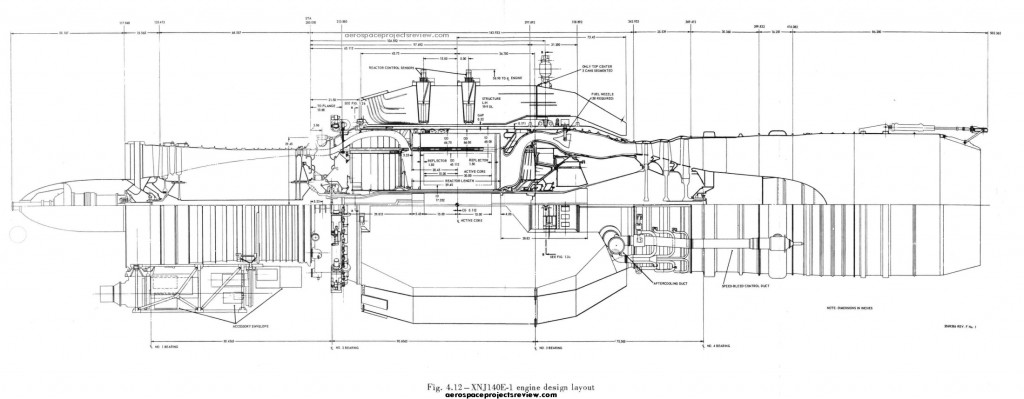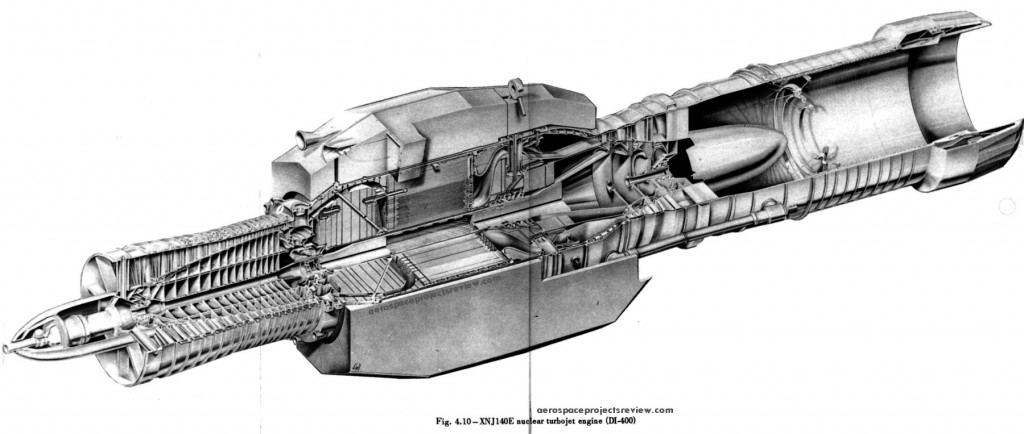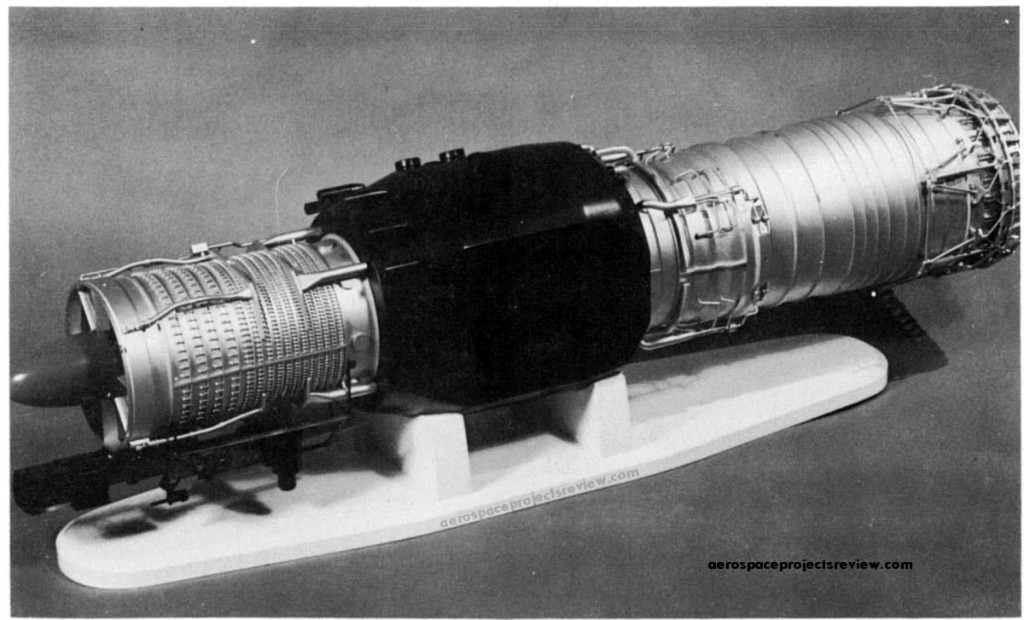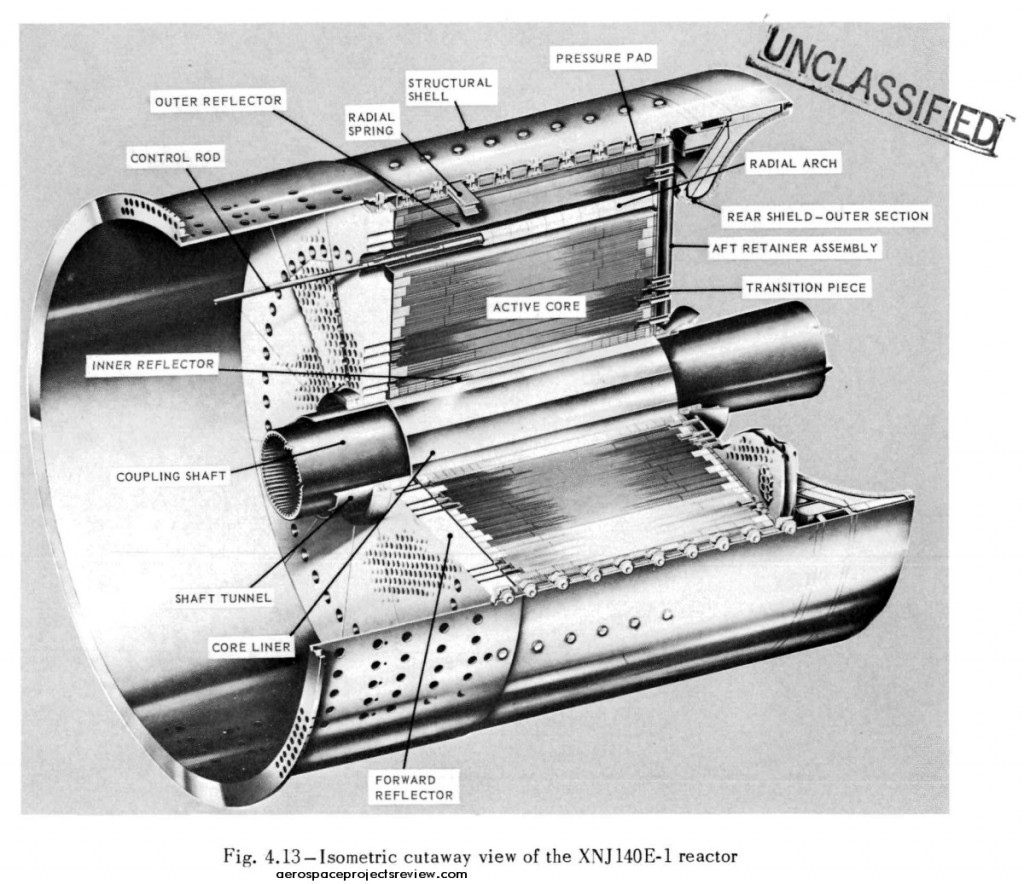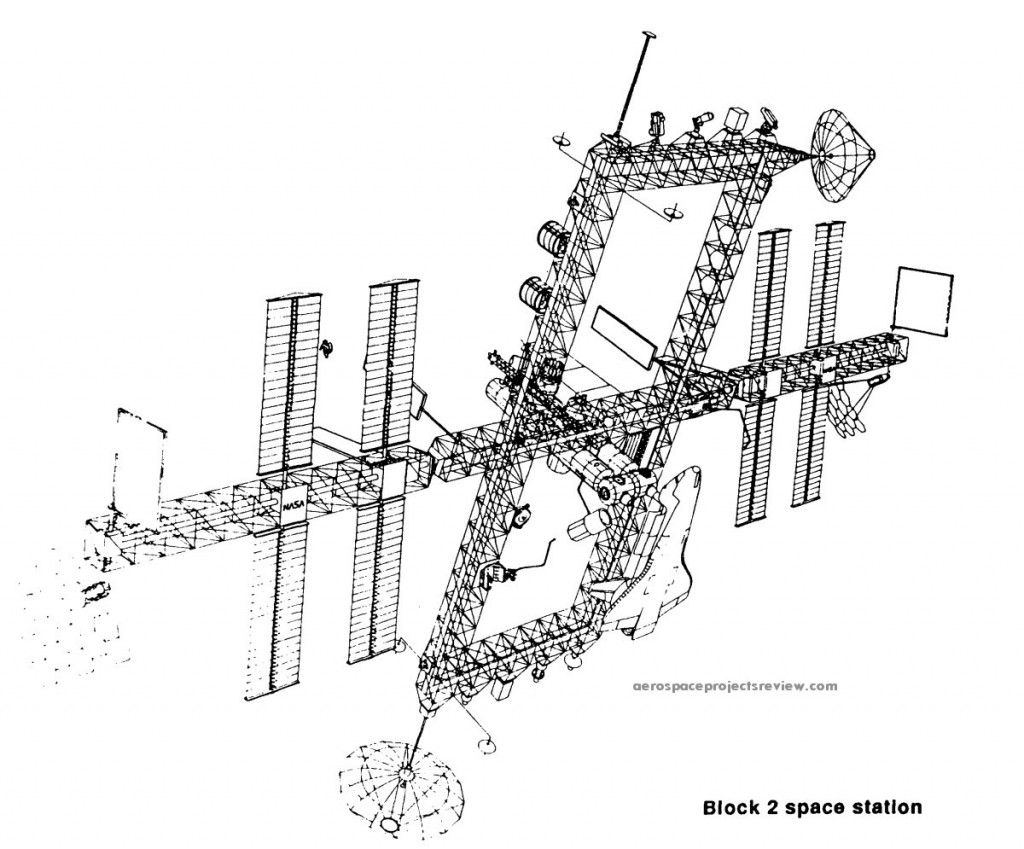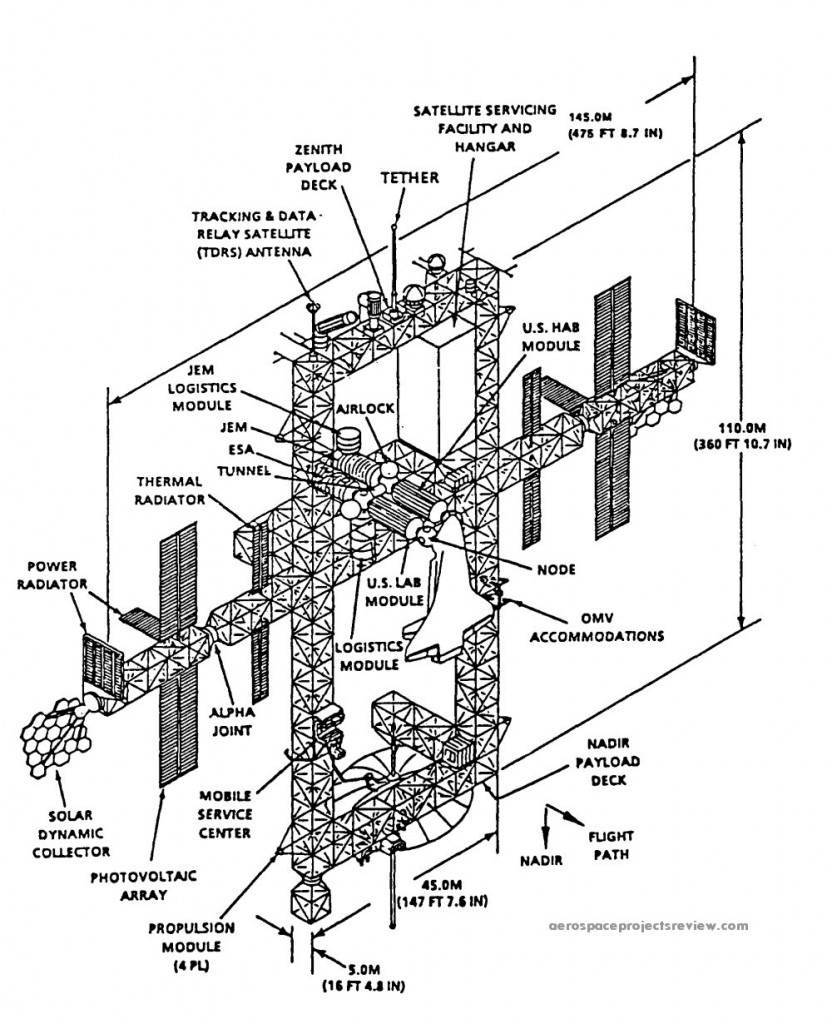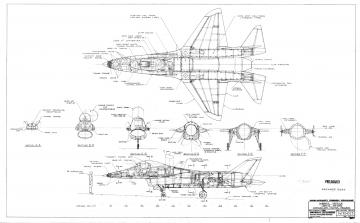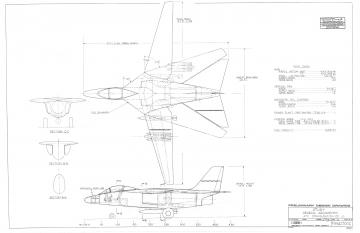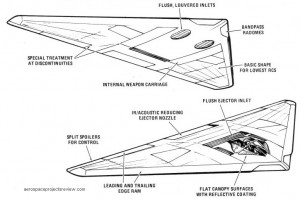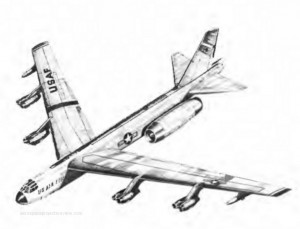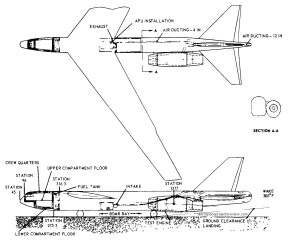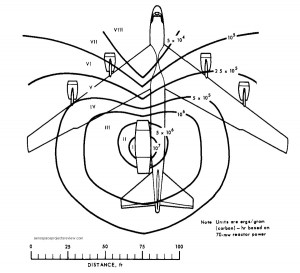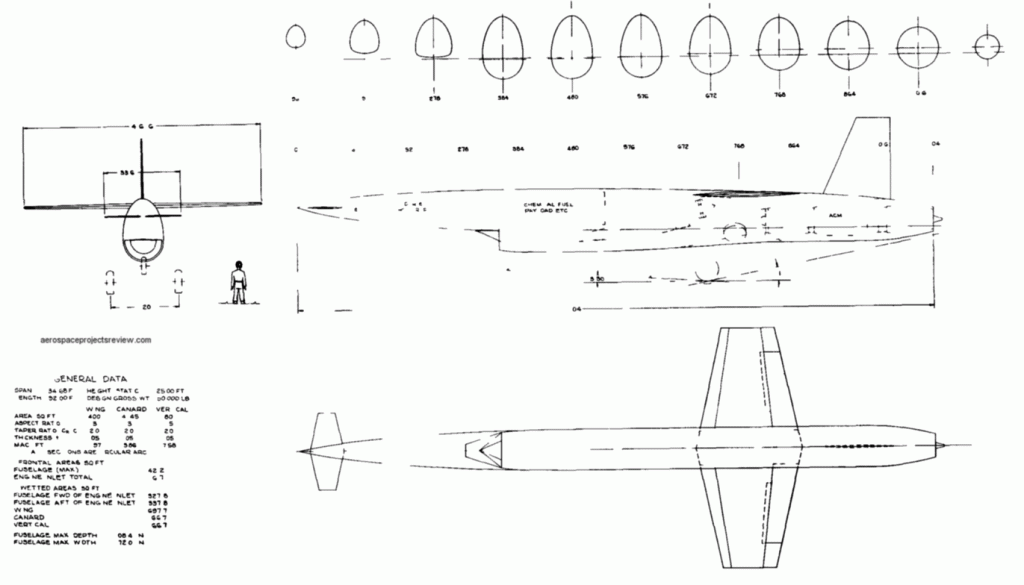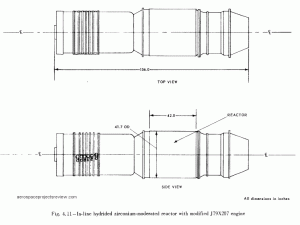No point in developing a nuclear powered turbojet if you don’t have some sort of idea what you’re going to put it in. In the case of the XNJ140E, three of them were to power the Convair NX2. The NX2 was a research aircraft based on prior design work for a subsonic nuclear powered missile carrier, the Model 54 (not a “bomber,” per se, as it had no internal bomb bay and carried powered missiles rather than gravity bombs).
Numerous variants of the NX2 were designed, taking advantage of different nuclear turbojets. The design shown below used three XNJ140E’s to provide cruise propulsion; but for takeoff, two additional chemically fueled turbojets were provided in underwing pods.
The configuration was an unconventional canard layout. This had the advantage of letting the engines occupy the tail of the aircraft, clear of entanglements with wings or stabilizers. After landings the engines could be relatively easily removed from the aircraft for servicing and storage.
